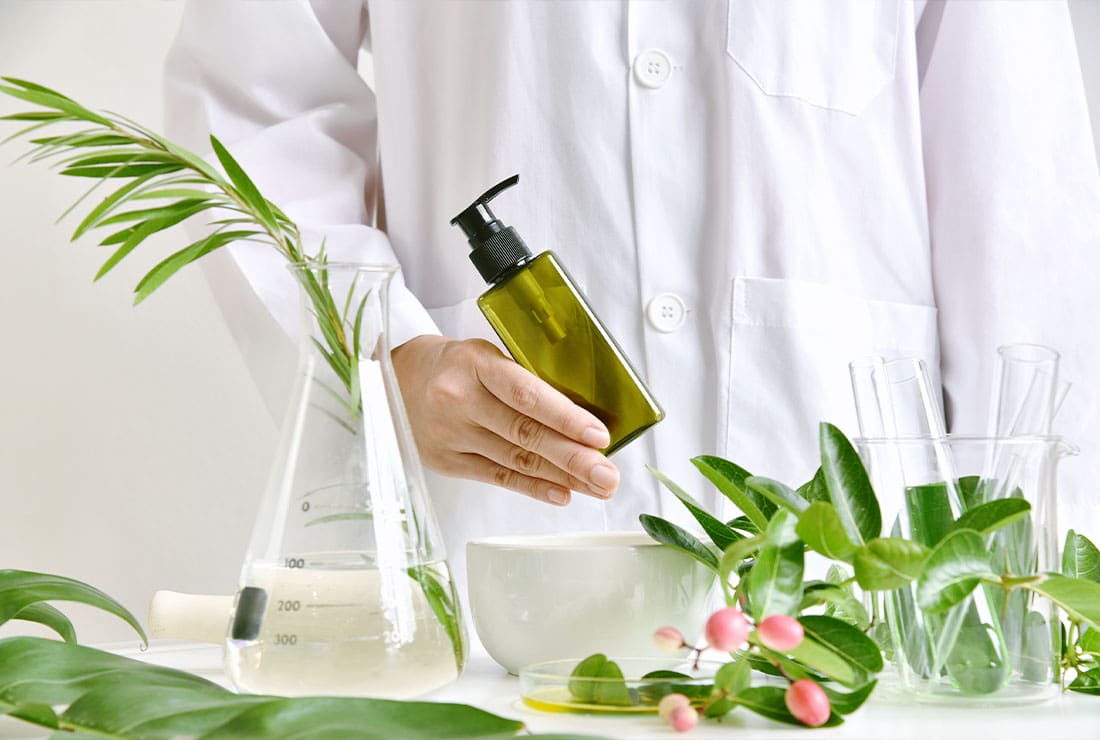Japan is one of the world’s most lucrative yet legally complex beauty markets. Its consumers are globally admired for their skincare rituals, demand for quality, and embrace of innovation. For founders and marketers, Japan offers scale, prestige—and influence across Asia.
But many international brands eventually discover that Japan’s Pharmaceutical and Medical Device Act (PMD Act, formerly the Pharmaceutical Affairs Law) is more than fine print. It governs ingredients, claims, labeling, and even the way you phrase your product story. Overlooking it can result in delays, recalls, or even blocked launches.
This article is designed to guide you through that maze. Drawing from experience helping both indie D2C brands and global beauty companies, we’ll break down how the law applies to cosmetics, highlight common pitfalls, and map out a practical roadmap for approval and launch.
If you’re a founder, marketer, or consultant looking to enter Japan, this guide will give you the clarity and confidence to move forward without losing your brand’s identity.
Understanding the Basics: What is Japan’s Pharmaceutical Affairs Law (薬機法)?
Japan regulates cosmetics under the Pharmaceutical and Medical Device Act, also called the 薬機法 (yakki hoh). The law covers pharmaceuticals, quasi-drugs, and cosmetics, and sets standards for product safety, labeling, advertising, and consumer protection. According to Japan’s official law translation site, cosmetics are legally defined as products that beautify or maintain skin and hair condition without altering bodily functions.
That definition matters because it sets boundaries. A moisturizer marketed as “hydrating” qualifies as a cosmetic. The moment you say “reduces wrinkles” or “treats acne,” you may have crossed into quasi-drug territory. Quasi-drugs require additional approval and can take far longer to clear. Biorius notes that even seemingly minor wording shifts—such as “anti-aging” instead of “moisturizing”—can change your regulatory path entirely.
Unlike pharmaceuticals, cosmetics do not need pre-market approval. But they must comply with Japan’s Standards for Cosmetics and be filed with the Ministry of Health, Labour and Welfare (MHLW) through a designated Marketing Authorization Holder (MAH). The Pharmaceuticals and Medical Devices Agency (PMDA) clarifies that only a Japan-based MAH can take responsibility for this process.
Many foreign brands underestimate the scope of this law. They assume that if their products are cleared in the U.S. or EU, they can enter Japan with minimal adaptation. In reality, the Japanese system is more conservative, with oversight extending into areas including influencer marketing that Western teams often overlook.
Key takeaway: Cosmetics are less regulated than drugs, but the law is strict about definitions and wording. Underestimating these rules can derail your launch.
What Makes Japan’s Market Unique for Cosmetic Brands?
Beyond regulation, Japan’s cosmetic market has distinctive cultural and consumer traits that shape how brands succeed.
- High standards for safety and trust. Japanese consumers are less forgiving of errors than Western markets. As ProRegulations explains, even a minor discrepancy in labeling or documentation can permanently damage consumer trust.
- Subtle, evidence-based messaging. In the U.S. or EU, “transformative” and “powerful” are common marketing tropes. In Japan, consumers prefer understated promises backed by data or testing.
- Words carry legal and cultural weight. Terms like “natural,” “whitening,” or “medicated” are not just marketing adjectives. Each has a specific legal definition under the Pharmaceutical Affairs Law. For example, “whitening” generally falls under quasi-drugs and cannot be claimed casually.
- Strict monitoring of advertising. Japanese regulators actively monitor both traditional advertising and online campaigns. If influencers claim your product “cures acne” or “erases wrinkles,” you could face penalties—even if the brand didn’t write those words.
- Focus on ritual and sensory experience. As noted in Biorius, Japanese consumers value product qualities such as texture, scent, and absorption as much as functional claims. “Feels refreshing” can resonate more than “clinically proven to reduce wrinkles.”
This market rewards brands that adapt thoughtfully. Compliance and cultural sensitivity are not just legal boxes to tick, they’re part of building credibility with one of the most discerning audiences in the world.
Some Common Pitfalls Overseas Brands Face
Despite good intentions, many overseas brands hit similar roadblocks when entering Japan.
Overreaching claims. Many beauty startups lean on dramatic claims like “reverses aging” or “repairs skin damage.” In Japan, these are quasi-drug or pharmaceutical claims. According to CIRS Group, even one word can tip the balance from cosmetic to quasi-drug, requiring a completely different approval process.
Labeling errors. Japanese law requires ingredient lists written in the country’s official cosmetic nomenclature. Simply translating English labels won’t work. For example, “Vitamin C” must be listed in its regulated Japanese form, not a translated or scientific variant.
Documentation gaps. Japanese regulators expect certificates of analysis, stability testing, and safety reports formatted to local standards. A dossier that cleared EU requirements often needs significant reworking.
Influencer and UGC risks. Unlike in many countries, brands can be held responsible for influencer statements. If a content creator posts, “This cream healed my acne,” regulators may interpret it as a brand claim.
Ignoring MAH requirements. A Japan-based MAH is mandatory to file cosmetics. Foreign companies cannot self-file. As ProRegulations notes, the MAH also carries responsibility for post-market safety. Brands that skip this step often face costly last-minute delays.
These pitfalls are avoidable with early planning. Successful brands treat compliance as an upfront priority, not a postscript.
What’s Allowed vs. Prohibited: Claims, Ingredients, and Advertising
Japan’s regulatory system draws a sharp line between acceptable cosmetic claims and prohibited quasi-drug or medical claims. The nuance often lies not just in the type of claim, but in the degree of promise.
Examples of permissible cosmetic claims:
- “Keeps skin moist”
- “For fresh, firm skin”
- “Removes impurities from pores”
- “Adds shine to hair”
- “Provides a smooth finish”
Examples of claims not allowed for cosmetics:
- “Keeps skin moist all day!”
- “Moisturizes with just one drop!”
- “Heals acne”
- “Whitening effect”
- “Anti-aging”
- “Repairs DNA”
As this detailed breakdown on moisturizing claims shows, regulators consider not just the basic benefit but also the intensity, duration, or exclusivity implied. A phrase like “keeps skin moist” is safe, but adding “all day” or “with just one drop” implies a level of guaranteed effect that pushes the claim into non-compliant territory.
Ingredients are also tightly regulated. The Standards for Cosmetics, summarized in the Global Cosing database, list prohibited and restricted substances. For example, certain preservatives, colorants, and UV filters require special approval.
Japanese brands have adapted by emphasizing user experience and consumer test data. Instead of saying “eliminates wrinkles,” they highlight “90% of users felt their skin was smoother after four weeks.” This approach stays within the law while building credibility.
Steps to Launch: A Roadmap for Compliance
A compliant launch in Japan requires a methodical approach. The typical steps are:
- Confirm your product category. Establish whether your product is classified as a cosmetic or quasi-drug. Biorius provides a clear breakdown of the differences.
- Review ingredients. Ensure your formula complies with Japan’s Standards for Cosmetics. Some ingredients allowed in the U.S. or EU may be restricted.
- Translate ingredient lists. Use official Japanese cosmetic nomenclature, not direct translations.
- Review labels and packaging. CIRS Group notes that labels must include importer details, country of origin, expiration dates, and mandatory warnings.
- Appoint a Marketing Authorization Holder (MAH). According to PMDA, only a licensed Japanese MAH can file notifications and take legal responsibility for safety.
- Compile documentation. Gather certificates of analysis, stability data, and safety test reports.
- Submit notifications. The MAH files with the MHLW before launch.
- Audit marketing language. Review packaging copy, website claims, and influencer scripts for compliance.
- Plan for post-market vigilance. According to Global Regulatory Partners, MAHs must monitor safety and report any adverse events.
Typical timelines range from six months to one year, depending on the complexity of your product and readiness of documentation. Brands that engage MAHs early often move faster.
Practical Workarounds and Tips for Founders
Compliance doesn’t mean sacrificing your brand’s voice. With the right strategies, you can stay compliant while building appeal.
- Consider local manufacturing. Producing in Japan under local GMP standards can simplify compliance and strengthen consumer trust.
- Leverage consumer test data. Claims like “85% of testers noticed smoother skin” are both legal and persuasive. They offer social proof without crossing into quasi-drug territory.
- Hire bilingual compliance experts early. Misunderstandings often arise in translation. A consultant fluent in both Japanese law and global marketing ensures smoother adaptation.
- Outsource compliance-heavy tasks. As suggested by CIRS Group, MAHs or compliance agencies can handle labeling, ingredient translation, and filing efficiently.
- Be patient but persistent. Regulators often suggest modifications rather than outright bans. Adjusting a phrase from “reduces wrinkles” to “improves skin texture” may resolve the issue.
- Think localization, not just translation. Japanese consumers value gentle, credible messaging. Reframing bold global claims into subtler language often increases brand resonance.
Many founders find that adapting for Japan improves their messaging globally, creating campaigns that feel more refined, credible, and trustworthy.
Final Thoughts: Launching Smart, Not Just Fast
Japan’s Pharmaceutical Affairs Law can feel intimidating, but it is also a framework for consumer trust. If you approach compliance as a strategic investment rather than a roadblock, your brand will not only gain legal entry but also consumer credibility.
Plenty of indie beauty startups have successfully launched in Japan. With persistence, expert partners, and a willingness to adapt, you can too.
If you’re planning your entry, a good starting point is CIRS Group’s regulatory overview or connecting with a licensed MAH for tailored guidance.
If this guide was helpful, share it with fellow founders or marketers considering Japan. Success here is challenging, but with the right roadmap, it’s absolutely within reach.




